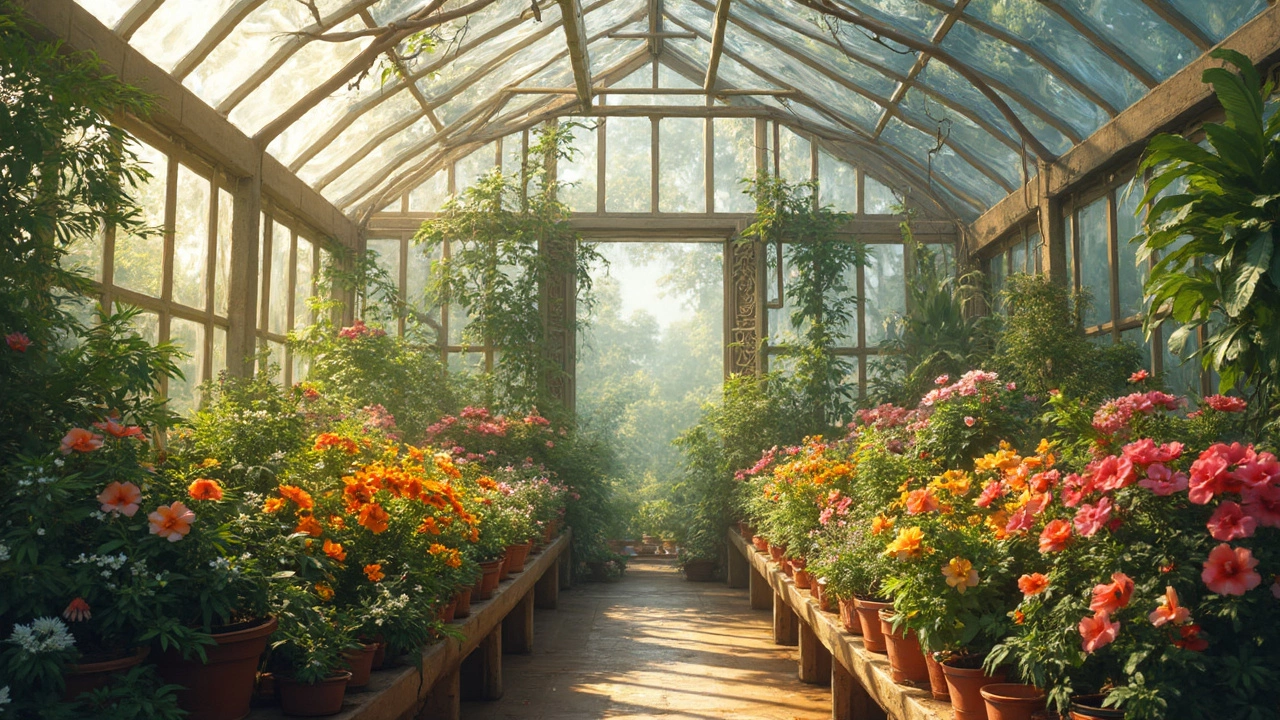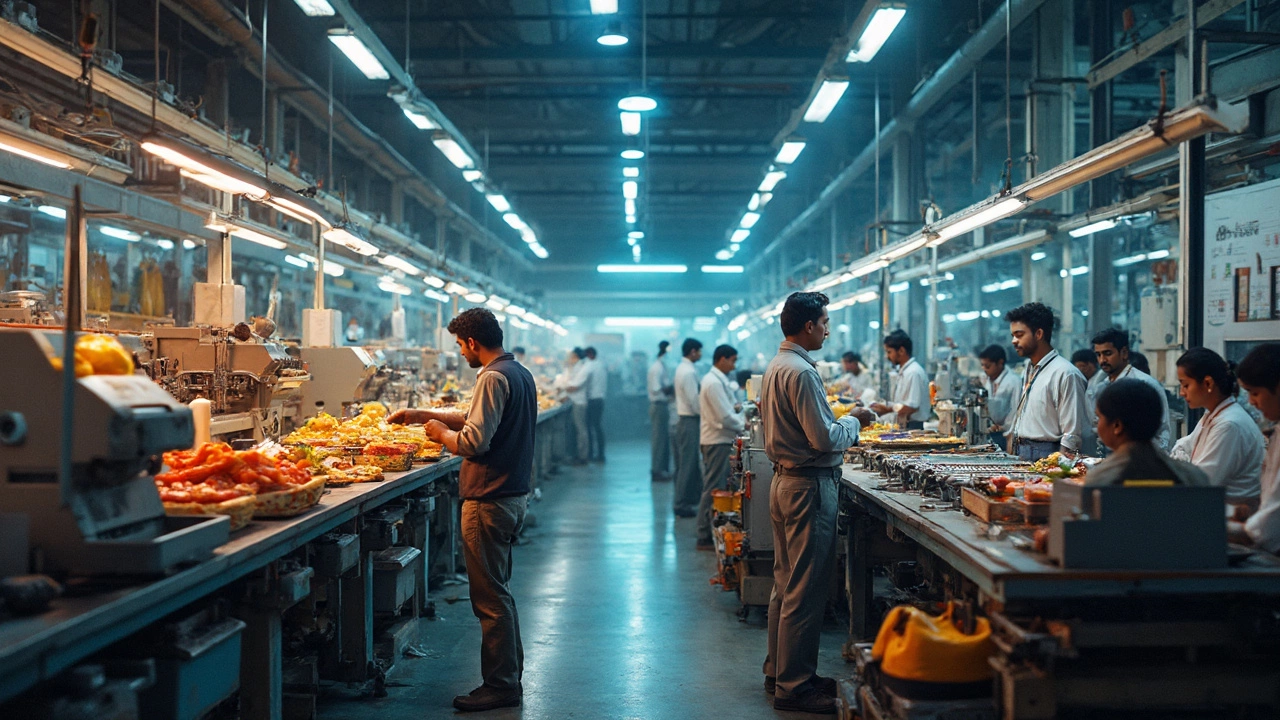Greenhouse Plants: How to Grow, Care for, and Enjoy Them
When working with Greenhouse Plants, plants cultivated in a protected glass or plastic structure that lets you control light, temperature, and humidity. Also known as indoor horticulture, they let gardeners extend seasons and grow exotic species in India’s varied climate. Greenhouse plants thrive when you match the right container, water system, and soil checks, which is why the tag brings together tips on Container Garden, a small‑scale, portable planting setup that fits inside a greenhouse, Drip Irrigation, a low‑flow watering method that delivers moisture directly to plant roots, Soil Moisture, the water content in the growing medium, measured to avoid over‑ or under‑watering and even the choice of Easy Flowers, low‑maintenance blooms that perform well in a greenhouse environment. These elements combine to create a reliable, high‑yield indoor garden.
First, think of a greenhouse as a climate‑control engine. It encompasses temperature regulation, humidity balancing, and light diffusion, which in turn requires precise watering and soil management. For example, a well‑designed drip irrigation system enhances water efficiency by delivering just enough moisture where the roots need it, cutting waste and lowering disease risk. Pair that with regular soil moisture checks, and you’ll know exactly when to water, preventing the soggy conditions that cause root rot.
Container gardening inside a greenhouse brings flexibility. You can move trays around to capture the best sunlight, swap out soil mixes for specific crops, and rotate crops seasonally without disturbing the main structure. This method influences plant health because it lets you tailor nutrient regimes and pest‑control tactics per container. When you combine containers with drip lines, each pot gets a steady drip, which keeps the soil consistently moist without drowning the roots.
For beginners, choosing easy flowers like marigolds, petunias, or zinnias is a smart first step. These species tolerate a range of temperatures and thrive on minimal maintenance, making them perfect candidates for greenhouse trials. Their quick bloom cycles also give instant visual feedback, so you can see the impact of your watering schedule and light adjustments within weeks.
Key Practices That Tie It All Together
1️⃣ Monitor soil moisture daily. Use a simple probe or a digital meter; when the reading drops below the recommended range, activate your drip system. 2️⃣ Adjust drip flow rates seasonally. Warm months need more water, cooler periods less. 3️⃣ Rotate containers weekly. This spreads light evenly and prevents one side of the greenhouse from becoming a heat sink. 4️⃣ Pick fast‑growing, low‑maintenance flowers. Their success builds confidence and showcases the greenhouse’s potential.
When you follow these steps, the greenhouse becomes more than a structure—it turns into a predictable production zone. That predictability enables you to plan harvests, experiment with new varieties, and even scale up to commercial production if you wish.
Beyond watering, temperature control is essential. Most greenhouse plants perform best between 18°C and 30°C. Use ventilators, shade cloths, or simple night‑time heating to stay within that window. Pairing temperature control with precise drip irrigation creates a feedback loop: the right heat drives transpiration, which the drip system matches with water supply.
Another hidden hero is the choice of growing medium. A mix of coco peat, perlite, and compost holds water long enough for the drip to work, yet drains quickly enough to avoid saturation. This medium also provides aeration, which is crucial for root respiration. When you combine the right medium with consistent soil moisture monitoring, you drastically cut the chances of fungal issues.
Now, let’s talk about pests. Greenhouses can trap insects, but a well‑managed drip system can help by reducing standing water where pests breed. Combine this with regular scouting and a few organic sprays, and you’ll keep the garden healthy without heavy chemicals.
All these practices – controlled climate, container flexibility, drip irrigation, soil moisture checks, and easy flower selection – form a tightly knit system. Each piece supports the others, making the whole more resilient and productive. That’s the core idea behind our curated collection of articles below.
Below you’ll find actionable guides that dive deeper into each of these topics, from daily watering myths in container gardens to step‑by‑step drip installation, plus expert advice on choosing the right greenhouse flowers for Indian climates.
Ready to turn your greenhouse into a thriving indoor farm? Scroll down and explore the detailed posts that will help you master every aspect of greenhouse plant care.
What Not to Grow in a Greenhouse: Flower Gardening in India
Some plants are just not meant for greenhouse life, especially in India. The unique climate and conditions of greenhouses can be a blessing for some flowers but a curse for others. Learn which flowers are better left outside to save yourself frustration and disappointment. Discover practical tips to make the most of your greenhouse space. Avoid common pitfalls, and ensure your gardening efforts bloom happily!
- manufacturing
- India
- food processing
- garden tips
- rice cultivation
- government schemes
- balcony garden
- urban gardening
- balcony gardening
- profitable business
- business ideas
- plastic manufacturing
- drip irrigation
- plant care
- steel manufacturing
- sustainable gardening
- startup ideas
- steel industry
- flower gardening
- textile manufacturers






